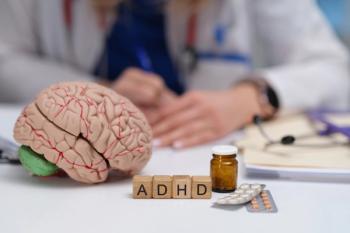
How white matter affects ADHD symptoms in children
MRI studies have associated white matter bundles with greater severity of ADHD symptoms.
In a recent update, information was given on how white matter (WM) bundles affect the severity of symptoms in children with attention deficit-hyperactivity disorder (ADHD).
ADHD is one of the most common conditions seen in children, with a clinical diagnosis given to 3% to 8% of school-aged children and an estimated 65% of cases lasting into adulthood. It has received a significant amount of scientific attention in the last few decades, with questions arising about its cause and neurophysiology.
The increase in the proportion of ADHD cases among the pediatric population has been noted, especially since ADHD diagnosis is based on observations from family members, teachers, and clinicians. Currently, the root cause of ADHD is not considered when making a diagnosis. This has caused different diagnosis methods between clinicians, countries, and cultures.
There are 2 main categories of treating ADHD: pharmacological treatment and psychosocial interventions. A recent survey showed that among children with ADHD, 62% receive medication, 47% behavioral treatment, and 32% both. Beneficial results have been observed from these treatments, such as improved school performance and quality of life.
While these treatments provide important benefits, they do not address the key psychological process behind ADHD. Certain psychostimulants can also cause adverse events, including an increase in anxiety. Comorbidities are also present in many instances of ADHD, and the lack of a homogeneous ADHD population makes assessing these illnesses difficult.
MRI studies have been used to evaluate phenotypes which may be responsible for ADHD. These studies aimed to reduce the variability present when diagnosing ADHD. WM connectivity is part of these analyses, having advanced because of improving technology.
In MRI studies, connections have been found in WM pathways connecting between the frontal, parietal, and basal ganglia regions. These connections have been associated with symptoms of inattention, hyperactivity, and impulsivity. Smaller WM bundles have been similarly associated with these symptoms.
While these studies have created associations between WM microstructure and symptom severity in children, the biological events leading to this link are still unknown, leading investigators to suggest a more inclusive approach to studying ADHD.
Reference
Gagnon A, Descoteaux M, Bocti C, Takser L. Better characterization of attention and hyperactivity/impulsivity in children with ADHD: The key to understanding the underlying white matter microstructure. Psychiatry Research: Neuroimaging. 2022;327. doi:10.1016/j.pscychresns.2022.111568
Newsletter
Access practical, evidence-based guidance to support better care for our youngest patients. Join our email list for the latest clinical updates.








